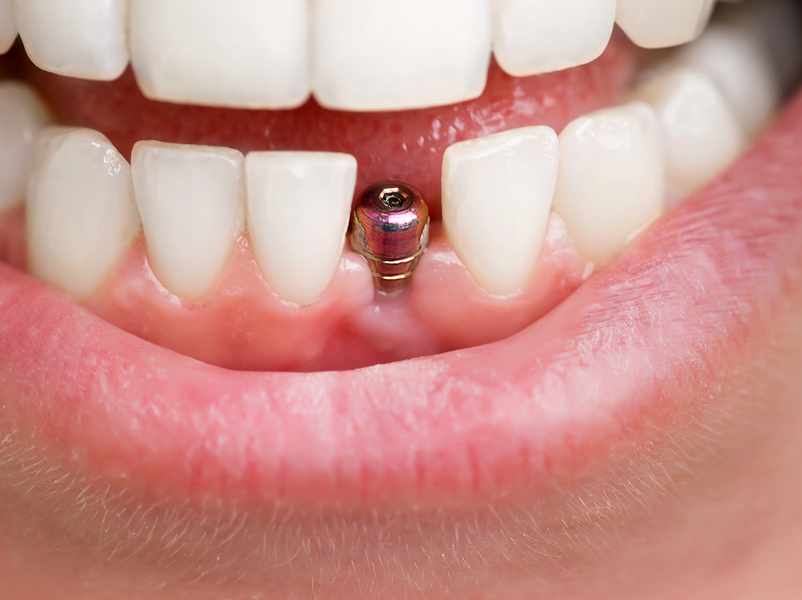Dental implants are actually pretty straightforward, generally consisting of three separate parts that include an implant post or screw that is inserted into your jawbone, an abutment that is attached to the implant post or screw and which protrudes just above your gum line, and the final tooth restoration that will cover up the abutment. The idea behind using a screw or post is that it will bond with your jawbone during a process called Osseo integration. This is where new bone cells begin to grow on the specially treated implant post, eventually holding the post firmly in place so it cannot move even a fraction. This bonding process helps to ensure the implant post is strong enough to hold a replacement tooth. Dental implants can be used to support implant crowns, bridges or complete dentures.
The need for replacing a single missing tooth in the back is often times not as intuitively obvious as the need for replacing a single missing tooth in the front; but it is important. Teeth are very movable. We’ve all witnessed an Orthodontist putting tension on a tooth with a small rubber band and moving it where ever he wants. Each tooth in the mouth has a position and a purpose. When there is a single missing tooth the body’s natural reaction is to drift adjacent teeth into the void that is created. Over time a single missing tooth may actually cause a change in the position of every other tooth in the mouth. Malocclusion may then develop contributing to TMJ [tempromandibular joint] dysfunction, headaches, muscle spasms in the neck and shoulders, food impaction between teeth, tooth decay, periodontal disease, and other problems. Because these problems don’t always develop and because they may occur years after the single tooth is lost, people often times don’t associate the loss of their tooth to the problems it caused. It is a shame that a single missing tooth is frequently ignored in light of the possible consequences but the development of dental implants for the replacement of a single missing tooth is encouraging many more people to seek early treatment.
Failure of Implant
While rare, dental implant failure can occur in some patients. Exerting excessive pressure on newly implanted post can lead to partial or complete structural breakage of a dental implant. Grinding the teeth at night while sleeping (medically referred to as Bruxism) can disturb the positioning of an implant, eventually leading to its failure. In order to keep the implant protected at sleeping and resting times, it may be necessary to use a mouth guard.
Prolonged Pain
Some patients may encounter prolonged pain in the area of the placement. This may be caused by severe localized inflammation or placement of the prosthetic root near a major or even a minor nerve branch. In these situations there are different methods of intervention. If the pain persists for a longer period of time, the implant removal becomes necessary.
Injury to Adjacent Teeth
It is likely that a patient got his/her adjacent teeth injured during placement of the implant. The injury may happen during preparation of the recipient site. When drilling, the dentist may injure an adjacent tooth. In order to eliminate this potential problem, it is very important that you get the dental implantation done in a reputed aesthetic dental clinic at the hands of a skilled dental surgeon.
For the elimination of the above mentioned complications and problems it is vital that patients visit Dental Implants Tijuana on regular basis to ensure well being of their restorations.
